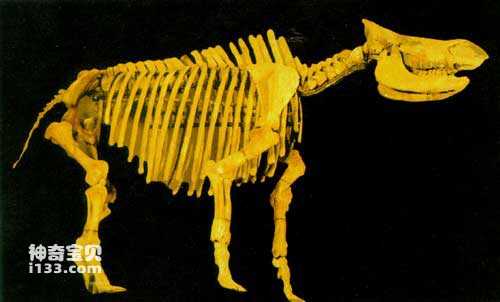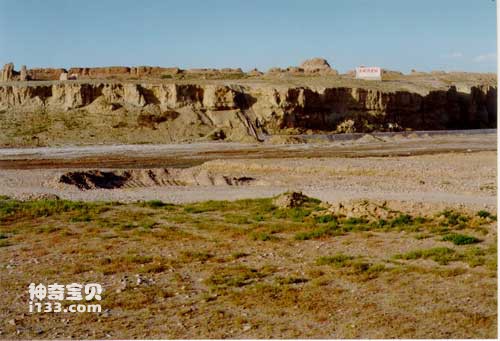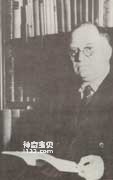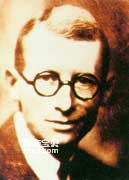In the early 20th century, some Western scholars, based on the evolution of mammals and changes in the natural environment since the Tertiary Period, inferred that Central Asia (including northwest China and Mongolia), the vast arid and barren wilderness today, was in the distant past. It is the "Garden of Eden" that once gave birth to mankind. Therefore, many countries have organized expeditions into Central Asia, trying to find clues to humankind’s distant ancestors. For a time, "Central Asia Fever" swept across the world of paleoanthropology and paleontology.

Sarawusu Ruins

woolly rhinoceros
Beginning in 1914, Father Sang Zhihua, the founder of Tianjin Beijiang Museum (the predecessor of the current Tianjin Natural History Museum) and a famous French collector, conducted 10 years of inspection activities in the Yellow River Basin. In 1920, he discovered abundant fossils of three-toed horse fauna in the Loess Plateau of eastern Longxi; at the same time, he discovered in the loess accumulations of the late Pleistocene (130,000 to 10,000 years ago) north of Qingyang, Gansu. Three stone artifacts made by ancient humans were found - one quartz rock core and two quartz stone flakes. This is the first batch of Paleolithic tools discovered on Chinese soil, which is of great significance. This discovery not only corrects the prejudice that "China has no Stone Age humans", but also further stimulates the dream of the anthropology community to find fossils of human ancestors in China.

Shuidonggou Ruins
In 1922, based on clues provided by a Mongolian fellow named Wangchuck, Sang Zhihua discovered the world-famous Sarawusu ruins in the southeast corner of the Ordos Plateau (located in what is now Wushen Banner, Yike Zhao League, Inner Mongolia Autonomous Region within the territory). In 1923, Sang Zhihua and De Charjin conducted further investigations and excavations on this site twice, and found a very rich and well-preserved woolly rhinoceros, Hetao big-horned deer, Wang's buffalo, wild ass, antelope, Fossils of 33 species of mammals, including camels, and 11 species of birds, including ostriches, were also discovered. A batch of Paleolithic tools and a human upper incisor fossil were also discovered. The animal fossil assemblage indicates that the age of the Sarawusu site should be the late Pleistocene (its absolute age was recently determined to be about 35,000 years ago using radioactive isotope methods). In addition, Sang Zhihua and Derich Jin also discovered a very rich Late Paleolithic cultural site in a place called Shuidonggou in Lingwu County, Ningxia Hui Autonomous Region.

Anderson
At the same time, starting in 1921, the American Museum of Natural History's Asian expedition team, organized and led by the famous naturalist and explorer Andrew, spent a full 10 years searching for traces of human ancestors in the Gobi Desert of Mongolia, but failed With little success. However, they have achieved fruitful results in collecting Tertiary mammal fossils, which strongly proves that the Central Asian Plateau is an important stage for the evolution of mammals in the Old World (referring to Eurasia and Africa).

Bu Dasheng
The famous Swedish geologist Andersen once devoted himself to the "Central Asia Fever" and devoted himself to the investigation of ancient Chinese culture since 1919. In 1921, he used to excavate the Shaguotun copper-stone cave site in Jinxi County, Liaoning Province, and the famous Yangshao Village Neolithic site in Mianchi County, Henan Province. In 1923 and 1924, he inspected various places in Gansu and discovered many villages and cemetery sites from the late Neolithic Age and the Chalcolithic Age. At that time, Canadian anatomist Bu Dasheng was teaching at Peking Union Medical College. He had a good working relationship with Andersen and had always agreed with the theory that Central Asia is the cradle of mankind. He wrote "The Differentiation of Asia and Primates." Wait for the paper to discuss that Central Asia is the most promising place to find early humans and their ancestors. In 1925, these two scholars began to actively prepare for a Central Asian inspection project aimed at Xinjiang. Their collaborative project had received financial support from the Swedish Scientific Research Council and the Rockefeller Foundation in the United States in 1926. At this time, an unexpected discovery made them suddenly shift their attention to Zhoukoudian, a small suburban town in the southwest of Beijing that was inconspicuous at the time.
animal tags:
We created this article in conjunction with AI technology, then made sure it was fact-checked and edited by a Animals Top editor.